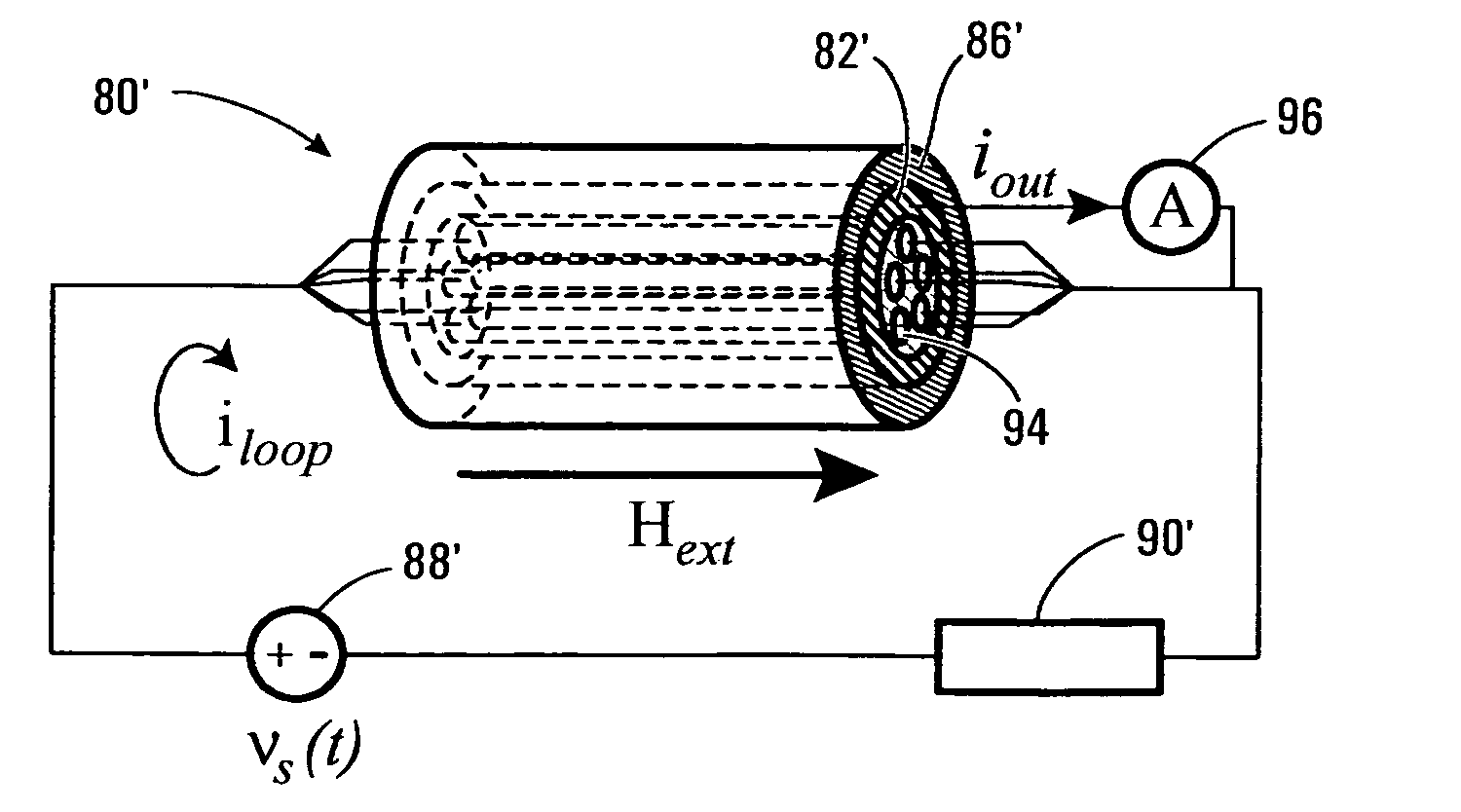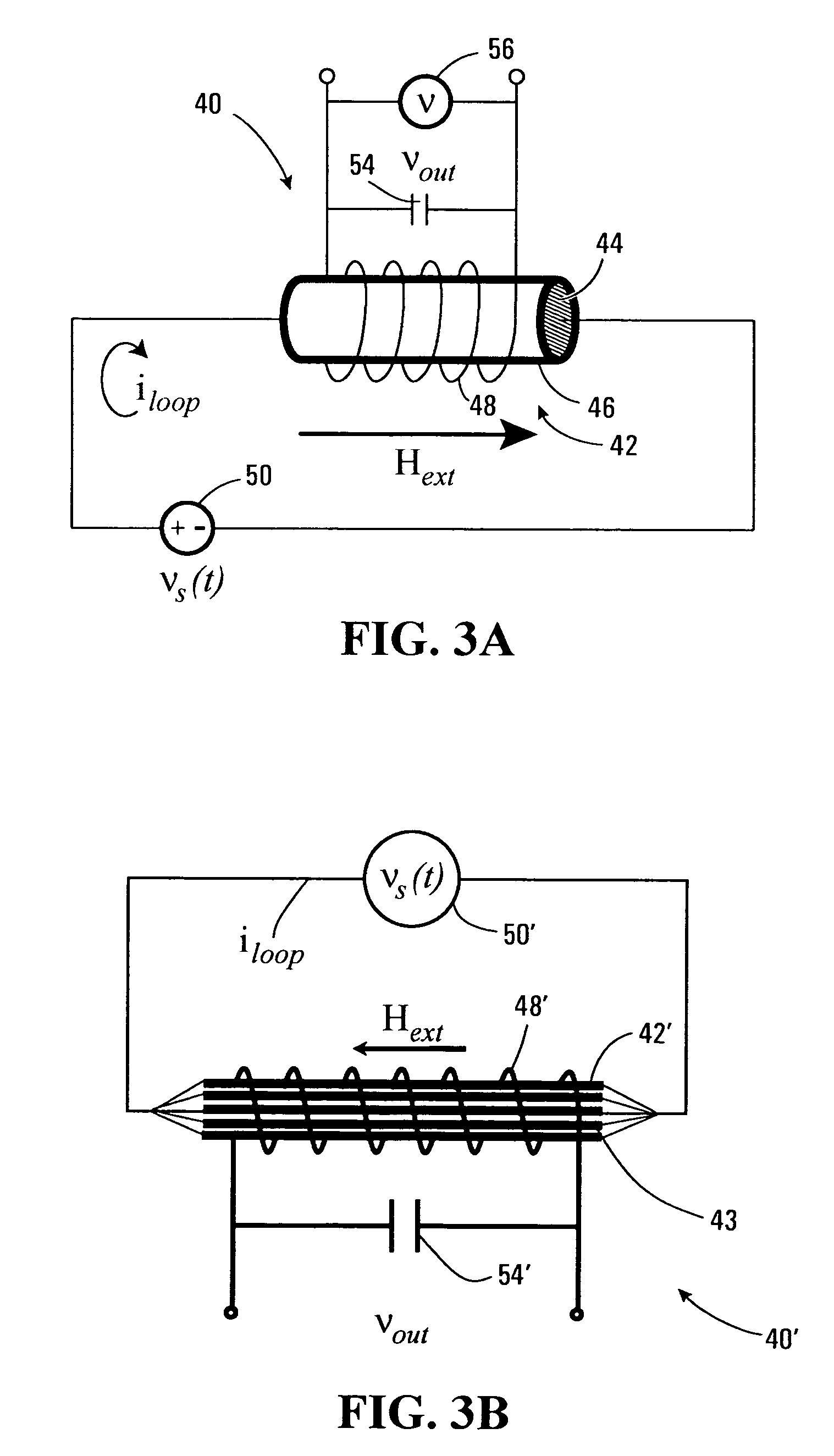Multi-conductive ferromagnetic core, variable permeability field sensor and method
a ferromagnetic core and variable permeability technology, applied in the field of sensing magnetic fields, can solve the problems that the conventional methods of measuring magnetic fields, such as the field detection coil, the magneto-resistance (mr) element, the thin film fluxgate sensor (fgs), are not sensitive enough to detect the magnetic field of the brain, and their application is limited to laboratory and dinical conditions
- Summary
- Abstract
- Description
- Claims
- Application Information
AI Technical Summary
Benefits of technology
Problems solved by technology
Method used
Image
Examples
Embodiment Construction
[0024]FIG. 1 depicts a μ-H curve 10 illustrating the relationship between the permeability (μ) of a particular ferromagnetic material and a magnetic field in the material having a magnitude |Hcore|. As illustrated, the permeability is highly dependent on the strength of magnetic field Hcore until the magnetic material is saturated. At saturation, the permeability remains relatively constant despite an increase in the magnetic field strength. In region 12, the variation of permeability μ is generally, and steeply, linear with Hcore: a slight increase in H results in a significant increase in
[0025]μ(i.e.ΔμΔH>>1).
Curve 10 illustrates the relationship between μ and Hcore for a particular range of frequencies of Hcore within the material. Empirically, it has been observed that the value of μmax increases as the frequency of Hcore is increased. Thus, the sensitivity of μ in relation to Hcore may increase further in the presence of a time varying Hcore. An optimal frequency of frequenc...
PUM
 Login to View More
Login to View More Abstract
Description
Claims
Application Information
 Login to View More
Login to View More - R&D
- Intellectual Property
- Life Sciences
- Materials
- Tech Scout
- Unparalleled Data Quality
- Higher Quality Content
- 60% Fewer Hallucinations
Browse by: Latest US Patents, China's latest patents, Technical Efficacy Thesaurus, Application Domain, Technology Topic, Popular Technical Reports.
© 2025 PatSnap. All rights reserved.Legal|Privacy policy|Modern Slavery Act Transparency Statement|Sitemap|About US| Contact US: help@patsnap.com



